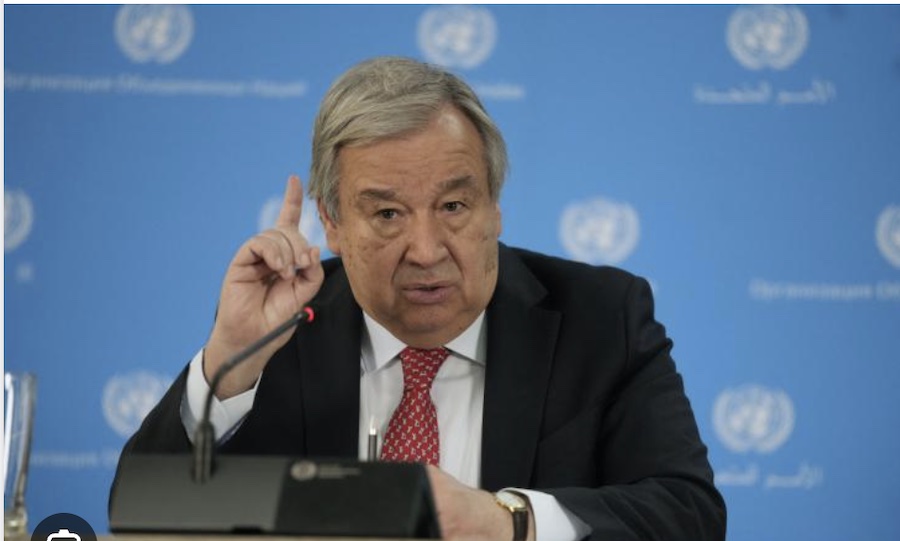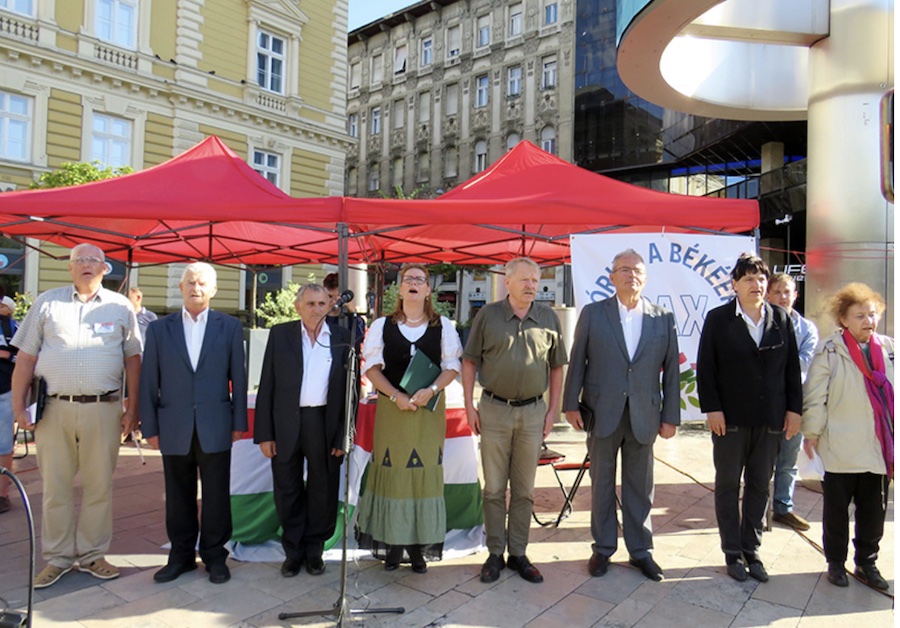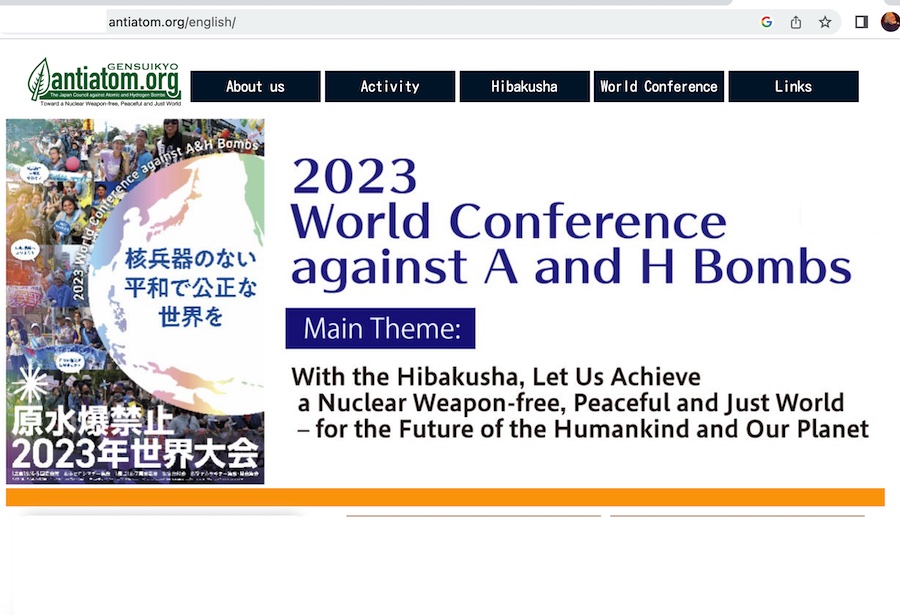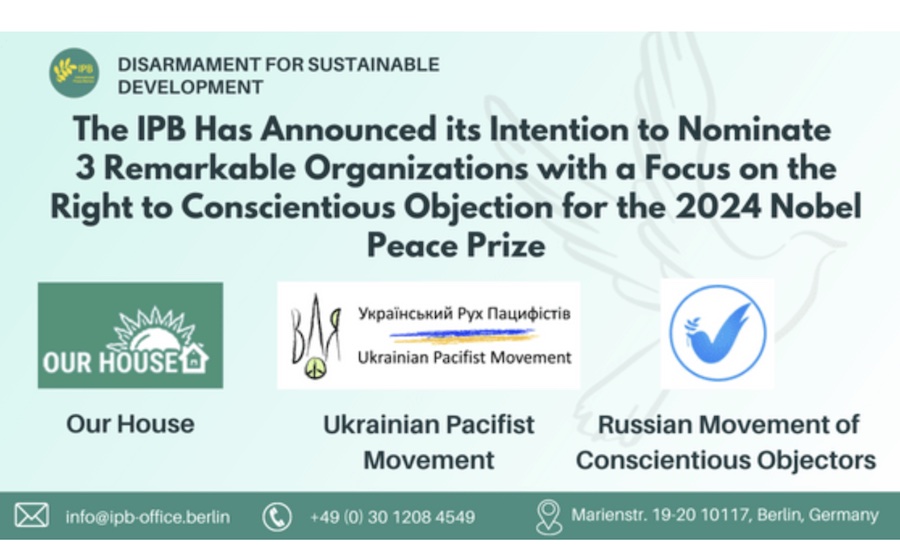. . SUSTAINABLE DEVELOPMENT . .
An article from Common Dreams (reprinted according to terms of Creative Commons (CC BY-NC-ND 3.0) license)
I didn’t expect to love Yellowknife, the capital of Canada’s Northwest Territories—a lot of the towns of the far north always seem hunkered down to me, a collection of Quonset huts braced against the long winter. Yellowknife, though, was charming: I hadn’t been off the airplane three minutes before the northern lights broke through, a green wave cracking across the sky. The next morning I wandered the shores of Great Slave Lake, past houses perched on the rocks of the vast shore like the most picturesque parts of downeast Maine. In between meetings with First Nations leaders key in the pipeline fights of the last decade, I wandered the trails around the capitol building—among other things, I happened across a pure black morph of a fox, one of the loveliest creatures I’ve ever seen.
And now Yellowknife is being evacuated—its 20,000 residents trying to drive south down the long road towards Edmonton, or being flown out in shifts from its small airport, even as flames and smoke lick at the city limits.
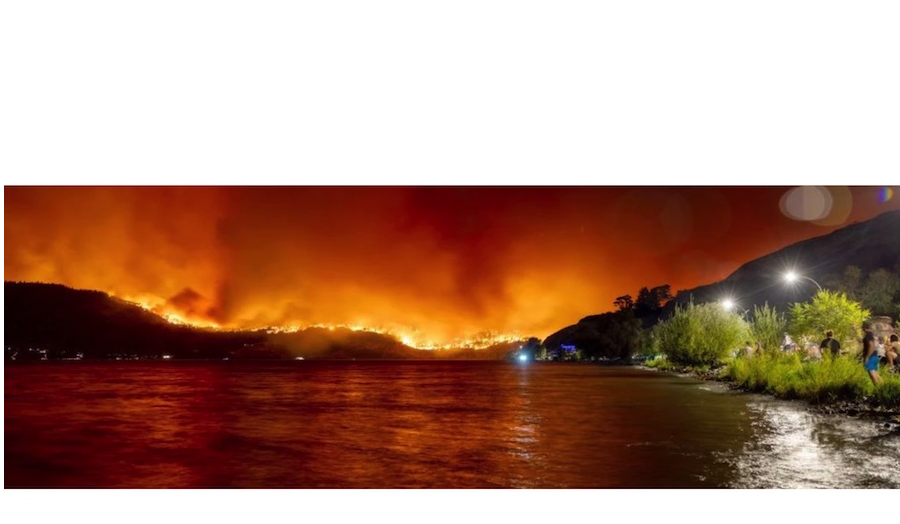
Residents watch the McDougall Creek wildfire in West Kelowna, British Columbia, Canada, on August 17, 2023, from Kelowna. (Photo: Darren Hull/AFP via Getty Images)
(Click on image to enlarge)
It’s important—in this year that has seen global warming come fully to life—to describe accurately what’s happening on our planet. And one key thing is: the number of places humans can safely live is now shrinking. Fast. The size of the board on which we can play the great game of human civilization is getting smaller.
Yellowknife this week, and Maui, and Tenerife in the Canary Islands, and Kelowna, a beautiful city in British Columbia’s Okanagan country. The pictures from each looked more or less the same: walls of orange flame and billows of black smoke. In each case many of the people hardest hit were Indigenous; in each case fear and sadness and anger and above all uncertainty. What would be left? When might we return? Could we build back?
The story of human civilization has been steady expansion. Out of Africa into the surrounding continents. Out along the river corridors and ocean coasts as trade grew. Into new territory as we cut down forests or filled in swamps. But that steady expansion has now turned into a contraction. There are places it’s getting harder and harder to live, because it burns or floods. Or because the threat of fire and water is enough to drive up the price of insurance past the point where people can afford it.
(Article continued in the right side of the page)
If we can connect up the planet through Internet, can’t we agree to preserve the planet?
(Article continued from the left side of the page)
For a while we try to fight off this contraction—we have such wonderfully deep roots to the places where we came up. But eventually it’s too hot or too expensive—when you can’t grow food any more, for instance, you have to leave.
So far we’re mostly failing the tests of solidarity or generosity or justice that these migrations produce. The E.U., for instance, has this year paid huge sums to the government of Tunisia in exchange for “border security,” i.e., for warehousing Africans fleeing drought:
‘We all heard that the prime minister of Italy paid the Tunisian president a lot of money to keep the Blacks away from the country,’ Kelvin, a 32-year-old Nigerian migrant, said on Saturday from Tunisia’s border with Libya.
Like other sub-Saharan African migrants, many of whom can enter Tunisia without visas, he had spent several months cleaning houses and working construction in Sfax, scraping together the smuggler’s fee for a boat to Europe. Then, he said, Tunisians in uniforms broke through his door, beat him until his ankle fractured, and put him on a bus to the desert.
But the size of this tide will eventually overwhelm any such effort, on that border or ours, or pretty much any other. Job one, of course, is to limit the rise in temperature so that fewer people have to flee: Remember, at this point each extra tenth of a degree takes another 140 million humans out of what scientists call prime human habitat:
By late this century, according to a study published last month in the journal Nature Sustainability, 3 to 6 billion people, or between a third and a half of humanity, could be trapped outside of that zone, facing extreme heat, food scarcity, and higher death rates, unless emissions are sharply curtailed or mass migration is accommodated.
But even if we do everything right at this point, there’s already extraordinary quantities of human tragedy inexorably in motion. So along with new solar panels and new batteries, we need new/old ethics of solidarity. We’re going to have to settle the places that still work with creativity and grace; the idea that we can sprawl suburbs across our best remaining land is sillier all the time. Infill, densification, community—these are going to need to be our watchwords. Housing is, by this standard, a key environmental solution. Every-man-for-himself politics will have to yield to we’re-all-in-this-together; otherwise, it’s going to be far grimmer than it already is.
Matters are moving quickly now.
– – – –
BILL MCKIBBEN
Bill McKibben is the Schumann Distinguished Scholar at Middlebury College and co-founder of 350.org and ThirdAct.org. His most recent book is “Falter: Has the Human Game Begun to Play Itself Out?.” He also authored “The End of Nature,” “Eaarth: Making a Life on a Tough New Planet,” and “Deep Economy: The Wealth of Communities and the Durable Future.”

